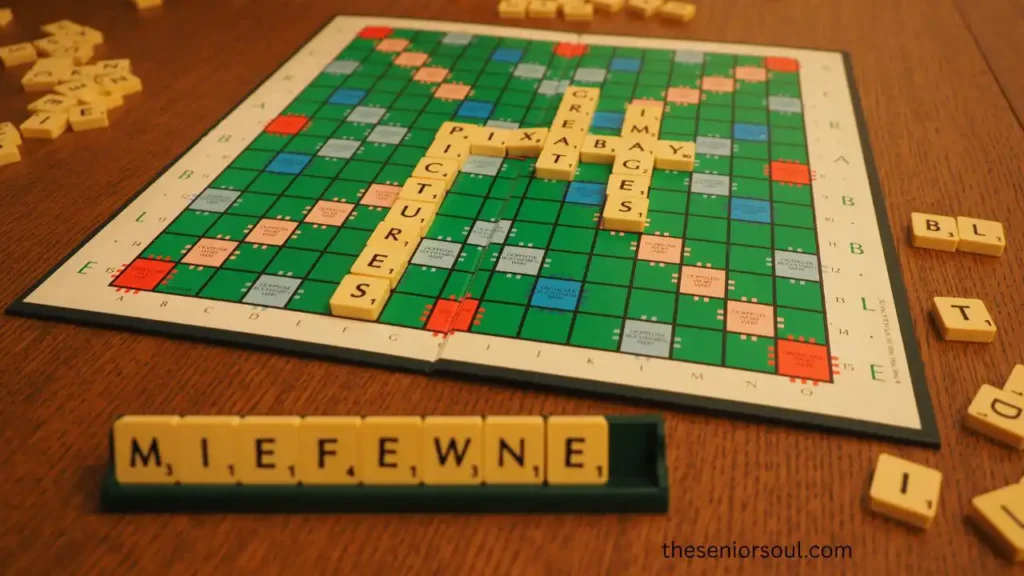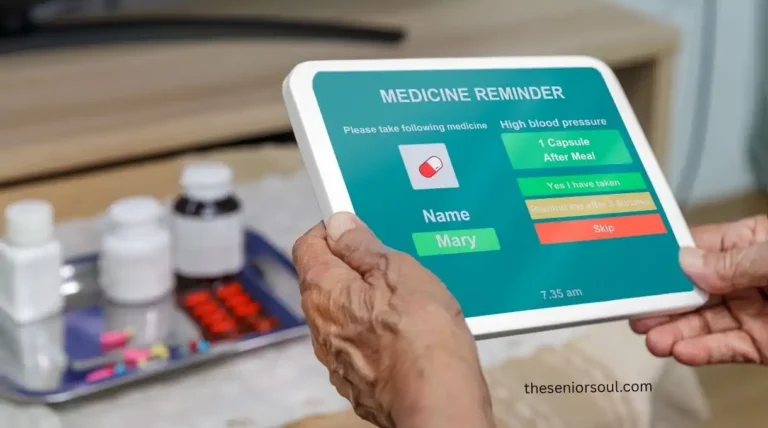When Smart Dementia Friendly Board Games Prevent Restlessness

Every week, I work with families who have dementia, and I observe the same trend. Dementia patients frequently sit for extended periods of time without engaging in structured activities. According to data from the World Health Organization, about 57 million individuals have dementia, and nearly 10 million new cases are diagnosed each year.
According to a 20-year study conducted in France, frequent board game players were 15% less likely to develop dementia than non-players.
These figures make it abundantly evident that regular gaming are not insignificant hobbies but rather reflect a changeable aspect of lifestyle.
Table of Contents
What Happens When Games Are Not Adapted
When a well-meaning grandson sets a challenging game of Monopoly on the table, I have seen his grandmother become agitated by rules that she used to know easily. Unstructured time is associated with greater agitation scores and a quicker rate of cognitive loss, according to studies conducted on residents of nursing homes.
When difficulty exceeds competence, poorly selected games can have negative effect sizes (down to –1.14) on cognition, according to a comprehensive assessment of 27 intervention trials. Though it may appear innocuous, boredom contributes to anxiety, restlessness, and caregiver burnout.
How I Choose and Use Dementia Friendly Board Games
I break the solution into six steps that you can replicate today. Each step appears under its own heading so search engines and you can locate it quickly.
1. Dementia Friendly Board Games and Stage Matching
I begin by adjusting the game’s difficulty to the dementia stage. For 15 weeks, the GO Game pilot RCT offered one session per week; even participants with moderate dementia were able to learn the rules and improve their digit-span scores when compared to the controls.
Word-finding activities are still handled by early-stage players, so I use Qwirkle or Scrabble tiles with huge print. Mid-stage players benefit from color-domino or Uno games, when memory demand is reduced by matching beats. Late-stage players react well to tactile games with large discs, such as Connect 4 or a Track Marble Maze. Savor it.
As an example, plan a 15-minute “color match” activity for a mid-stage parent using dominoes after lunch every day. Finish when interest starts to wane in order to maintain a positive experience.
2. Dementia Friendly Board Games and Sensory Design
First, I examine the physical parts. High contrast colors, chunky elements, and large lettering all help to lessen visuospatial strain. According to WHO recommendations, vision impairment is a prevalent comorbidity among older persons. I replace glossy cards with matte laminates to eliminate ceiling light glare. Since abrupt alarms trigger startle reactions, I stay away from timers that beep.
Daily example. Use the 5-inch “Jumbo Index” deck of cards instead of a regular deck. Although the change is inexpensive, it eliminates a preventable obstacle.
3. Dementia Friendly Board Games and Rule Simplicity
Concise, repeating rules are a common characteristic of successful board-game interventions. The systematic review noted previous research showing that when games only required one or two decision points each turn, effect sizes for cognition might reach 2.60. On one card, I rewrite the rules in bold. I simulate a complete turn before the game starts. Instead of using mental math, I continue to score visuals using a token track or pegboard.
Daily example. To ensure that everyone sees every move when playing Rummikub, I remove the joker, presort the tiles by color, and play open-handed.
4. Dementia Friendly Board Games and Social Connection
Because board games combine communication and cognitive stimulation, they are successful. Retailers say that home users are less bored and lonely after playing the commercial game Call To Mind, which was created solely to evoke memories. Social interaction is important, and depression symptoms can hasten Alzheimer’s by four to five years. Open BMJ. To reduce the strain of competition and to ensure that everyone can see the pieces, I place players on the same side of the table.
A daily illustration. “What game did you enjoy as a child?” should be the opening question for each game. Before the rules are even established, this primes personal memory networks.
5. Dementia Friendly Board Games and Routine Building
I view game time like a drug, with a set dosage and interval. The development of habits makes use of procedural memory, which is more durable than episodic memory. Once-weekly sessions of randomized trials using GO and other board games were found to improve cognitive function . I like to do three 20-minute sessions a week because most caretakers can keep up with that without getting tired. I record start and end timings on a wall calendar to help several caretakers stay on schedule.
For instance, designate Monday, Wednesday, and Friday at 4 p.m. as “game o’clock” on the calendar on the refrigerator. Even when the energy appears low, hold a quick session because momentum counts.
6. Dementia Friendly Board Games and Progress Tracking
My approach to outcome measurement is straightforward. My notebook has two columns: Focus (minutes engaged) and Mood (smile, neutral, frown). The World Health Organization’s caregiver guides advise mood-turned scoring since it is associated with quality of life. Four weeks later, I assess whether attention time increases or mood evaluations change for the better. In the event when numbers falter, I either simplify or present a new concept.
Daily example. Write one line describing noteworthy reactions and circle one emoji in each column at the end of each session. As proof, present the sheet to the medical staff.
Mistakes I Learned to Avoid
- late in the course of the illness. Prior to learning being blocked by deficits, early exposure develops habits.
- with graphics geared toward children. Adults should have dignity, thus I go for designs that are artistic or neutral.
- adjusting too much. Early-stage players were bored with simplistic games; instead of infantilizing, match.
- neglecting sensory exhaustion. I change the space, not the player, because the dim evening light requires brighter boards.

Unique Perspectives You Will Not Find in Generic Lists
- I frequently design a “assistant” player who subtly makes lawful move suggestions as part of the rule superstructure. While avoiding dead ends, this maintains autonomy.
- Playing as a team, I pit one grandmother and grandchild against another. Intergenerational rapport is developed and cognitive loads are balanced through shared roles.
- The silent round: In the middle of the game, I add a turn where players make gestures rather than talking. This practice breaks monotony and strengthens nonverbal communication channels.
TAKEAWAY
I’ve demonstrated the transition of dementia-friendly board games from study chart to kitchen table. A common theme emerges from data from systematic reviews, randomized trials, WHO, and BMJ Open: play that is structured and suitably modified enhances mood, family bonding, and cognitive function.
Choosing stage-matched games, streamlining the rules, creating a routine, and monitoring mood are all clear action tasks. Start this week with a single 20-minute session. The opportunity to continue thinking, smiling, and feeling like they belong is something priceless that you will provide your loved one.
RELATED POSTS
What Unusual Hobbies for Seniors Offer Incredible Social Perks?
Discover the Best Movies for Seniors to Watch Today
Seeking Dynamic Things For Bored Seniors: Where to Find?
FAQs about Dementia Friendly Board Games
What makes a board game dementia friendly?
Start with ease of use, tactile comfort, and visibility. The characteristics of dementia-friendly board games are big pieces, high contrast colors, large lettering, few rules, and a predictable play order. Maintaining dignity, the themes remain mature rather than juvenile. While allowing players to succeed consistently through matching or choosing rather than calculation, the architecture minimizes memory strain.
Which board games are best for early-stage dementia?
Consider Qwirkle, large-print Scrabble, Rummikub, or Ticket to Ride First Journey, as early-stage players still adhere to reasonable regulations. Short turns and pattern recognition are used in these games, but strategy is still tested. Eliminate clocks, streamline scoring, and limit duration to avoid boredom while preserving interaction and dialogue, whether at home or in care.
How do board games benefit someone living with dementia?
Multiple brain regions, including vision, touch, language, and executive function, are stimulated simultaneously by board games. They lessen boredom, encourage conversation, and improve social ties. Research shows that regular play improves happiness, lowers caregiver stress, and delays functional deterioration. Participants and caregivers find that structured pleasure turns into a therapeutic habit without feeling clinical.
Can board games actually slow cognitive decline?
Longitudinal research consistently links frequent strategic play to slower cognitive decline, but board games cannot reverse dementia. Among the mechanisms are stress management, neuroplasticity, and cognitive reserve. Benefits rely on balancing play with physical activity, a healthy diet, continuing professional medical care, and adjusting game difficulty to skill level.
How do I adapt classic games for dementia players?
Play open-hand, with fewer pieces and cards with large print. Simplify the rules and write them on one card. If your hand strength is poor, use spinners instead of dice. Use visible tokens rather than arithmetic to keep score. Stop sessions early to maintain confidence and the motivation to repeat tomorrow. Do so as soon as you notice signs of exhaustion.
How long should each game session last?
The ideal time frame is 15 to 30 minutes. Similar lengths of weekly sessions were employed in research trials that produced cognitive benefits. Care routines can be easily accommodated by short, regular blocks that respect limited attention spans and reduce irritation. Always take a break or conclude the session early if agitation increases, and at the end of the session, really reinforce success.
Are electronic board games suitable for dementia?
When there is limited storage or travel, electronic versions can be useful. Automatic rule enforcement and zoom adjustment are features of tablets. Screen glare may occur, though, and tactile feedback is lost. To prevent unintentional exits, mix digital and physical play, make sure touch targets are big, turn off countdown sounds, and keep a tight eye on the game while it’s being played.
What safety factors should I check first?
Examine for trip hazards, sharp edges, or choking dangers from the dispersed parts. A few gamers may mouth objects, so make sure the materials are safe. Make use of sturdy tables with rounded corners, sufficient lighting, and supportive armchairs. Stay away from brittle glass countertops and loud timers that could shock or unpredictably agitate people who are already sensitive.
How can I involve grandchildren in play?
Grandchildren can read cards out loud, assist at moving pieces, and partner with grandparents against another pair. Empathy is increased, cognitive load is decreased, and turns are maintained through shared duties. Select aesthetically pleasing, cross-generational themes, such as storytelling prompts or complementary hues. Encourage children to be patient and provide an example of polite listening while everyone is making delayed decisions.
Where can I buy dementia friendly board games?
Board games that are dementia-friendly are available via memory-care catalogs, specialty stores, and internet vendors such as Relish, Alzheimer’s Store, and Occupational Therapy providers. You can borrow adaptable sets from the local library or senior center. Use “dementia board games large print” in your search. Check return policies because preferences differ and a few exchanges always guarantee the best fit.






